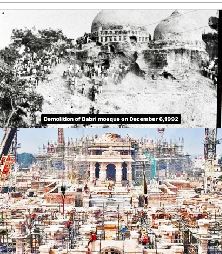After the demolition of the Babri mosque on December 6, 1992, Ayodhya is gearing up for the grand opening of the Ram temple, 31 years later.
The town has undergone significant changes, with both the temple construction and town’s infrastructure development in progress. The transformation gained momentum after the BJP took power in 2017, and Chief Minister Yogi Adityanath assumed office. In May 2017, shortly after the BJP’s ascent, the municipal boards of Faizabad and Ayodhya were amalgamated to form the new Ayodhya Nagar Nigam municipal corporation, facilitating increased funds for infrastructure development from both the state and the Centre.
Initially a part of Faizabad district, Ayodhya’s nomenclature underwent changes under the Adityanath government. In November 2018, the government renamed Faizabad district and division to Ayodhya. Later, in October 2021, it was announced that the Faizabad Railway Junction would be rechristened as Ayodhya Cantt. Ayodhya is undergoing significant infrastructural development to enhance its connectivity, with over 200 projects valued at Rs 30,923 crore in progress across 37 departments. The Maryada Purshottam Shri Ram International Airport, a major project, is being developed along the Lucknow-Gorakhpur highway.

















